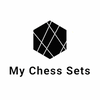Understanding Chess Pieces That Can Move Backwards
Chess, a strategic and intellectual game played on a square board divided into 64 squares of alternating colors, utilizes a variety of pieces, each with unique movement capabilities. Some chess pieces are confined to advancing forward or moving laterally, while others possess the versatile ability to move backwards. This guide will focus on those specific pieces that can move backwards, exploring their roles and strategic importance in the game.
The Queen
The queen is the most powerful piece on the chessboard, capable of moving in any number of squares vertically, horizontally, or diagonally. This ability includes moving backwards in any of these directions. The flexibility of the queen allows her to control large portions of the board and participate in both offensive and defensive play. Strategic use of the queen’s backward movement can be crucial in retreating to safety, repositioning for a better attack, or escaping threats from opposing pieces.
The Rook
The rook is another major piece in chess characterized by its capability to move horizontally or vertically across any number of squares. This includes the ability to move directly backwards along files and ranks. The rook's strength is especially evident in the endgame, where its ability to transition quickly across the board can be pivotal. Rooks are typically used in tandem, known as rook pairs, which can establish control and secure key areas of the chessboard through their coordinated movement, including backward maneuvers.
The Bishop
Bishops move diagonally across the board and can retreat backwards along the same diagonal paths they advance on. Each bishop starts on a square of a particular color (either light or dark) and remains on that color throughout the game. The ability for a bishop to move backwards is essential in maintaining long-range pressure on an opponent's position and in retreating to safety when under threat. Effective use of bishops often involves careful planning to ensure they complement each other, controlling both color complexes by positioning them on opposite colors.
The King
While not as freely mobile as the queen or rook, the king is no less critical to the game. The king moves one square at a time in any direction, including backwards. This ability is crucial during the endgame or when evading checks and potential threats. The backward move is often employed to maintain the king's safety, especially when castling is no longer an option or when navigating out of tight positions.
The Knight
Unique among chess pieces, the knight moves in an L shape pattern, which can consist of two squares in one direction followed by one square perpendicularly, or vice versa. This movement allows the knight to jump over other pieces. Although the knight does not move in a straightforward or diagonal path like other pieces, it can end its turn on a square that is technically behind its starting position, thus allowing backward movement in its unique manner. Knights are invaluable for their ability to threaten multiple targets and escape attacks thanks to their distinctive move set.
Strategic Considerations of Backward Moves
Understanding when and how to move chess pieces backwards can significantly enhance a player's defensive and offensive strategies. Backward movements are often defensive, allowing a piece to regroup or align with other pieces for a stronger defense or counterattack. Offensively, moving backwards can open up new angles of attack or free up space for other pieces to utilize effectively.
Conclusion
The capability of certain chess pieces to move backwards adds depth and complexity to the strategic nature of chess. Mastering these movements can not only help safeguard valuable pieces but also provide unexpected turns in the battlefield of chess. Whether you're a beginner learning the basic functions of each piece or an experienced player honing advanced tactics, appreciating these backward moves is pivotal in the broader context of game strategy.
Explore our large collection of luxurious chess sets!